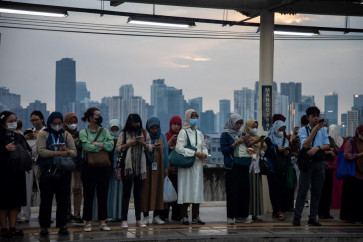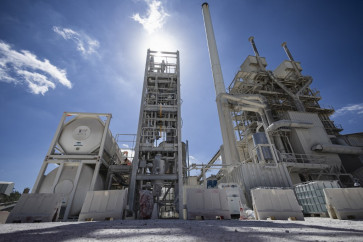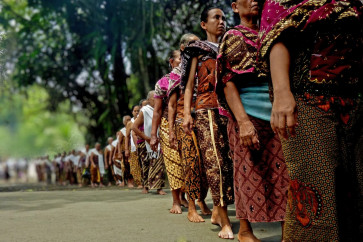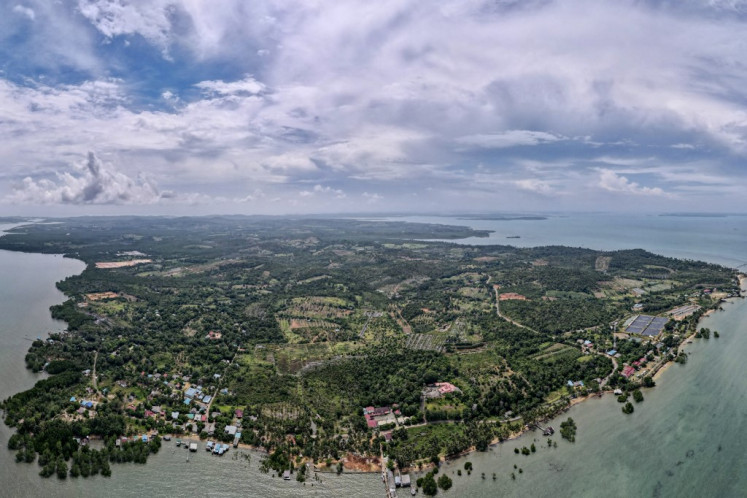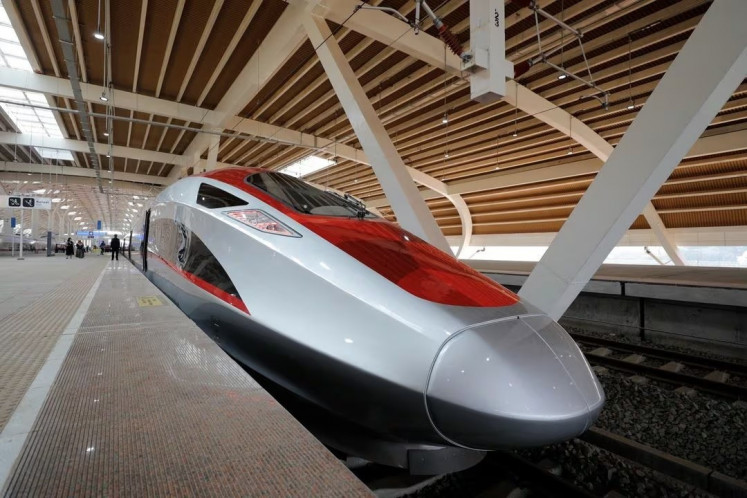Popular Reads
Top Results
Can't find what you're looking for?
View all search resultsPopular Reads
Top Results
Can't find what you're looking for?
View all search resultsWhat does the Indonesian LGBT movement want?
Lesbian, gay, bisexual and transgender (LGBT) issues have been dominating national debate
Change text size
Gift Premium Articles
to Anyone
L
esbian, gay, bisexual and transgender (LGBT) issues have been dominating national debate. Most opponents argue that homosexuality is contagious and have accused the LGBT community, alongside the media, of converting young heterosexuals. Some are also afraid of the possibility of Indonesians demanding the legalization of same-sex marriage.
However, these arguments neglect both the historical and cultural context of the Indonesian LGBT movement and assume that all LGBT movements worldwide share the objective of legalizing same-sex marriage.
In Indonesia, the LGBT movement developed from the establishment of a male-to-female waria (transgender) organization, Himpunan Wadam Djakarta (Hiwad), in the late 1960s. To assist a 'psychologically and socially disabled' group, the late Jakarta governor Ali Sadikin facilitated its establishment.
Waria then became the recipient of government support, mainly through the Social Affairs Ministry. On the other hand, although same-sex practices were common in many ethnolinguistic groups in Indonesia, according to scholar Tom Boellstorff, the term 'gay' as an identity marker appears to have emerged in the 1970s, following the formation of small urban gay 'friendship networks' and organizations in the 1980s.
Indonesian mass media published articles on the gay liberation movement in the West, playing a crucial role in helping Indonesian gays and lesbians identify their sexuality, locate and name their own sexual desires.
However, the process of identification did not really translate the entire meaning of the concept of Western homosexuality.
In his book, The Gay Archipelago, Boellstorff contends that 'gay and lesbi [sic] Indonesians instead dubbed dominant heterosexual models of love that in the contemporary period were shaped by the state's family principle.'
In short, they married heterosexually and had no interest in defending their rights and sexual identities, as in Western-style gay activism.
Three gay men formed in 1982 the first official Indonesian gay organization established in Surabaya, East Java, under the name of Lambda Indonesia (LI), after continuous communication and discussion involving nearly 100 gay men across the archipelago for almost a year. One of the founders was prominent gay activist and Cornell University graduate linguist Dede Oetomo.
Far from advocating same-sex marriage, the primary objectives of the first gay organization were to provide and encourage communication and contact with gay men living far from urban life, as well as mainstream behavioral change and self-acceptance among gay men. In addition, LI also offered counseling services for gay men to address and mitigate their anxieties and internal conflict. At the time homosexuals were perceived as social deviants suffering from mental illness.
To reach out and educate the gay community nationwide about sexuality, LI produced eight editions of G: Gaya Hidup Ceria zines ' dated from Aug. 1, 1982 to Nov. 8, 1984.
Since its establishment, LI has maintained contact with gay activists in Western Europe, North America, Australia and New Zealand.
However, these contacts did not mean that LI copied the whole-concept of the Western gay emancipation. For instance, in the article entitled 'Homoseks: Siapa dia?' (Homosexuals: Who are they?), apart from adapting basic knowledge on homosexuality from Western publications, the writer also included historical facts about sexual diversity in Indonesian culture, such as gemblak in East Java, kawe in South Kalimantan, and mairil (male same-sex practices) in Islamic boarding schools.
Hence, gay emancipation, according to LI, could not be disassociated from the Indonesian historical context, in which homosexual practices were inherent parts of cultural traditions in some ethno-linguistic groups.
Dede then wrote that LI was also intended to 'restore the traditions of same-sex compassion that were respected in ancient Indonesia.'
While coming out was considered a crucial part of liberation in the Western gay movement, Toto ' one of the authors ' suggested that having considered the potentials of disappointing families and close relatives, coming out as a gay man was neither imperative nor compulsory.
Since individualism was not considered an Indonesian value, there were two options when addressing the matter of coming out.
First, one could 'come out' as a gay man if he was psychologically ready. Second, one could keep his orientation confidential, while enhancing self-confidence to prepare himself if someday his secret was exposed.
With this distinction in mind, marriage equality was not a part of gay Indonesians' aspirations. Coming out to their families still remained the greatest challenge.
If the state legalized same-sex partnerships, it has been predicted that only a few gay Indonesians would register their partnerships, since they were not ready to disclose their sexual identity publically.
In 1983, LI also offered a solution for gay men who intended to sustain their romantic relationships. In one of the articles, Toto said that homosexuals living together had no issues under Indonesia's legal code.
Law did not prohibit two men from living under the same roof. Society also would not question two single men living together.
For example, men staying in the same hotel room would not raise eyebrows, compared to unmarried heterosexual couples. It is thus clear that since the early gay movement, marriage equality has never been the goal of the movement.
How could Indonesian LGBT persons strive for marriage equality, while many were still beaten up, harassed and fired from their jobs, just because of their sexual orientation and gender identity?
Until today, educating and advocating the end to discriminatory practices, as well as instilling self-worth for LGBT persons are still the primary objectives of the Indonesian LGBT movement.
However, society's double standard remains the main obstacle. The opponents keep spreading hatred and unreasonable judgment, while LGBT people are not given much space to talk from their own perspectives.
If they do talk, the conservatives would then accuse them of 'propagandizing homosexuality'.
What is that, if not tyranny and bigotry?
_________________________________
The author, who obtained his Masters in public policy from the National University of Singapore, is the writer of Coming Out and a gender and sexuality studies lecturer.


